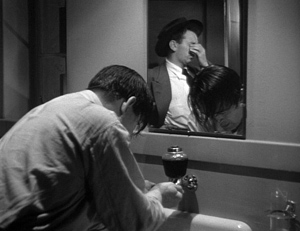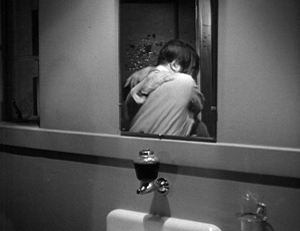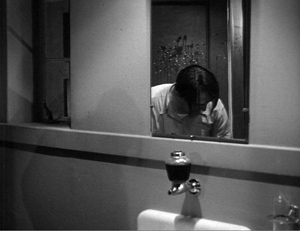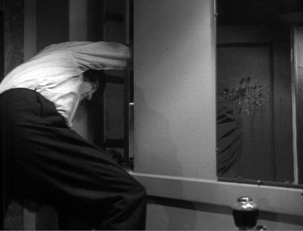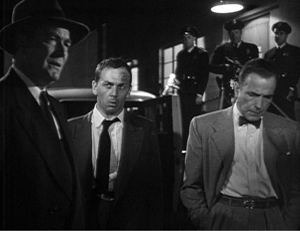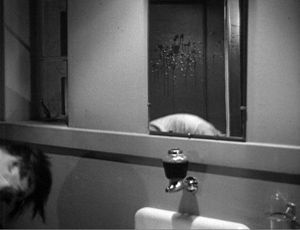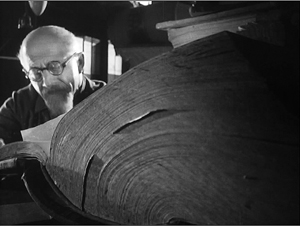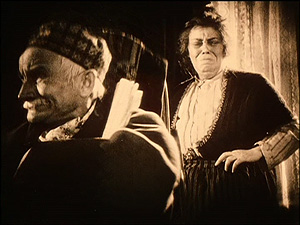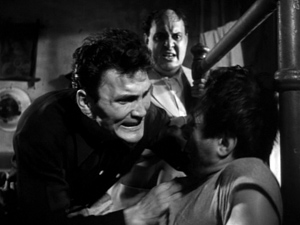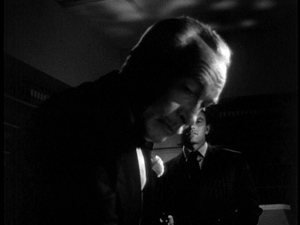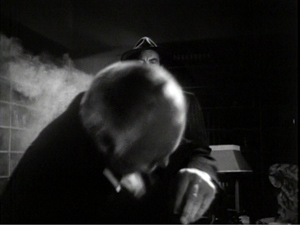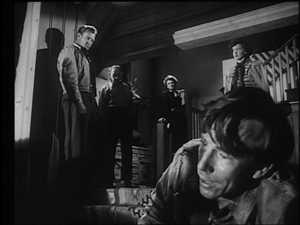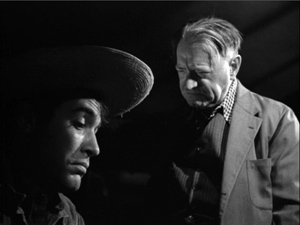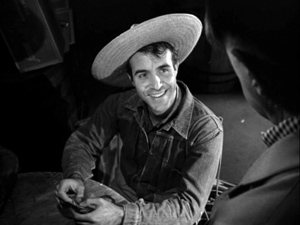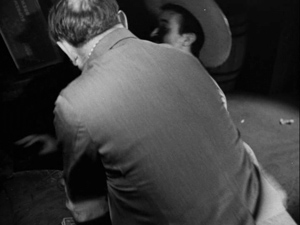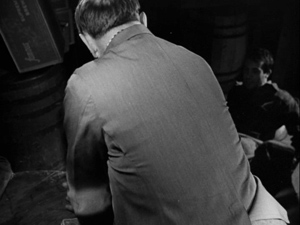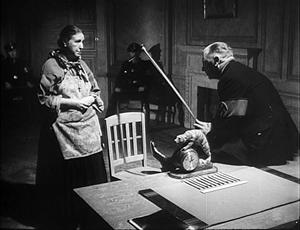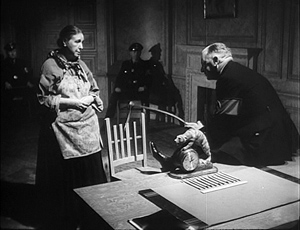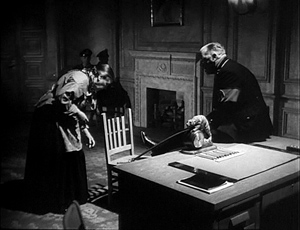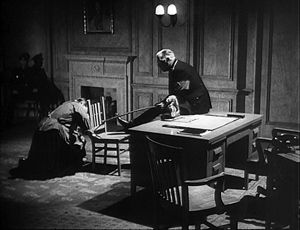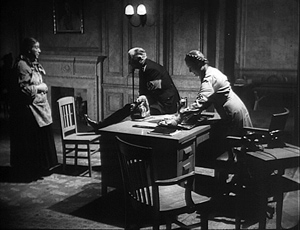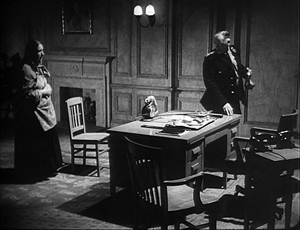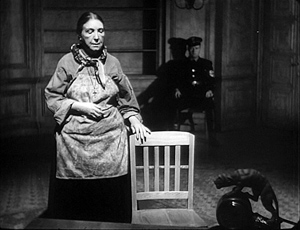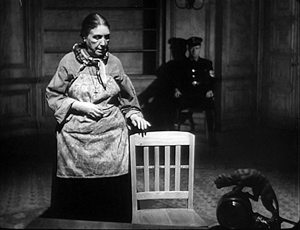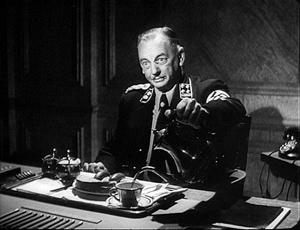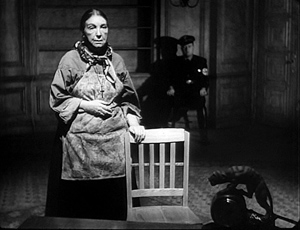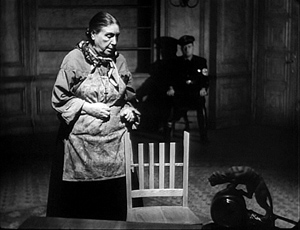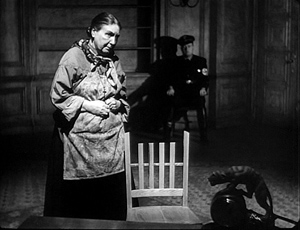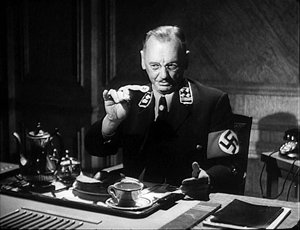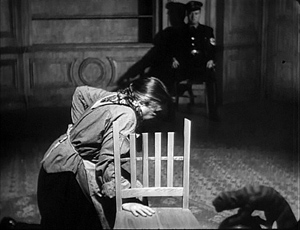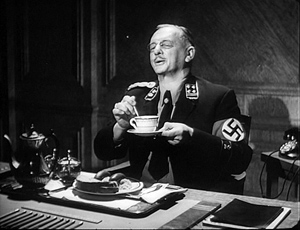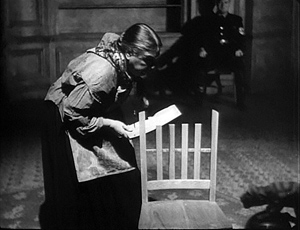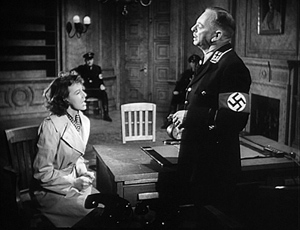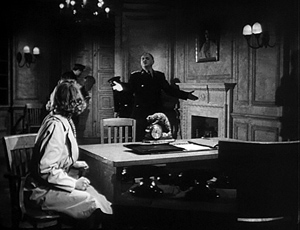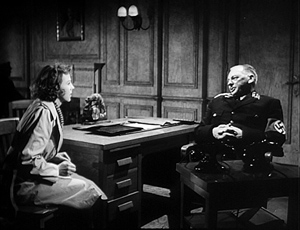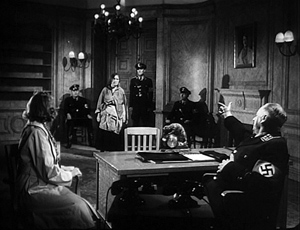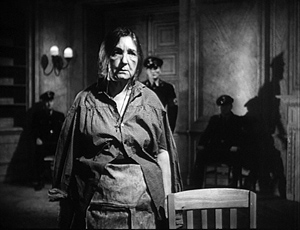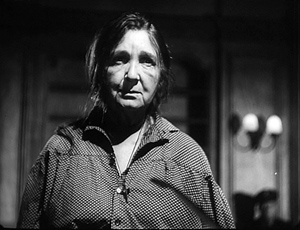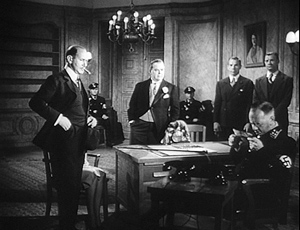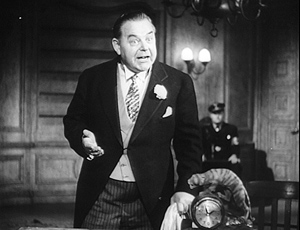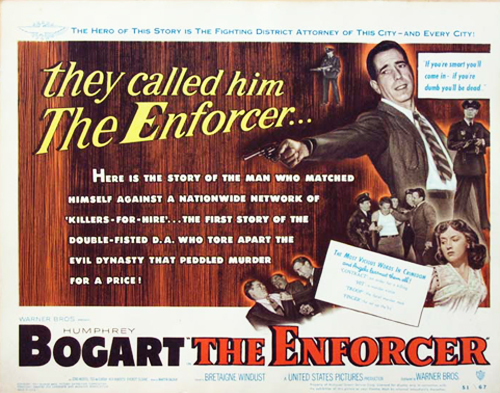Sunday, November 27, 2011
Roger Corman remains unflinching in the face of an evolving industry | Kristopher Tapley
More...
Roger Corman remains unflinching in the face of an evolving industry | HitFix.com - Kristopher Tapley
Wednesday, November 9, 2011
Writer’s Style: An Introduction | My PDF Scripts
So what's this all about, then?
Well, I've often thought about and, especially, as of late, have become increasingly interested in writing style.
As I pore through the many screenplays that I currently have – organizing, reading, and reading, and reading, etc. – it's hard not to realize the effect a writer's style can have on a screenplay and the film overall. I know some of you are uttering the words duh! at this very moment, but honestly, how many people, especially we burgeoning lot, are actually aware of this fact?
The more I read the more I begin to realize that some writers have an indisputable style that is all their own. A style so eccentric, so different, that without ever seeing a cover page, you can instinctively and intrinsically just know who wrote it. Just take a look at action lines by Wes Anderson or dialogue by John Sayles or the dark undertones of Paul Schrader or the balls out craziness of Tim Talbott or the fourth-wall-breaking of Shane Black or the heartfelt absurd themes of Charlie Kaufman.
If any one thing is quickly apparent when studying the craft of screenwriting, it's that good screenwriters do, indeed, have their own style. They may tackle myriad genres or a host of varying stories, but one thing is always overtly certain: it is their story.
And it makes sense: if directors can be known for their visual style, well, then, why not writers for their written style? Sure, most of the writers I mentioned earlier also wields a director credit or two, but that's the point: at some point their voice became so uniquely their own that no one else could tell their story the way they could. And as an aspiring writer/director myself, this is a lesson I've taken immense pleasure in discovering and learning.
It's exactly like that lesson you've read in every screenwriting how-to book currently gathering dust on your bookshelf: give me the same thing, only different. But here's the bit that I think has been routinely left out: give me the same thing, only different, and make it your own. The goal isn't simply to parrot what's come before and modernize it and/or give it a different twist. The goal is to tell me the story in your voice.
I can't tell you the number of screenplays that I've read that are absolutely, atrociously, make-me-wanna-take-hot-spoons-to-my-eyeballs boring. Why? Most aspiring screenwriters can grasp structure fairly quickly; to connect A to B to C isn't that difficult to comprehend, but what they seem to overlook is that they're supposed to be telling me a story.
No, I mean you are supposed to be telling me a story.
You.
Yes, you.
Still not getting it?
If I were to walk into the room that you're currently in, take a seat with my cup of coffee, and say, "Okay, tell me your story." How long could you hold my attention?
One cup?
Two cups?
Four pots?
It's no different on the page. When you write, I want you to tell me the story. What I don't want is the same cookie-cutter b******t everyone else is throwing at me.
No, g*******t, I want you to rip your f*****g larynx out of your throat and staple that f****r to the page and sign the byline in blood.
Because I want YOU to tell me the story. I want to hear your voice when I read it. I want the story to be so uniquely your own, and I want it to command my attention so ragingly, that it makes me weep when I have to read the words FADE OUT.
So, as a good introduction to Writer's Style, I suggest you download The Robotard 8000′s Balls Out and, for better or worse, I dare you to argue that – from the very first line of the script – it's not uniquely their own.
And while you're reading that, I'll be working on a write-up of the writer whose style I've been wanting to spotlight for quite a while now: that of Walter Hill.
Writer's Style: An Introduction | My PDF Scripts
Sunday, November 6, 2011
I Hate Dialogue | ScriptShadow
I hope you don't think you're going to learn a lot about dialogue in this article. Dialogue is a constant battle for me. It's something I don't totally understand. The reason for this is that dialogue is the one aspect of screenwriting you can't truly "break down." You can't divide dialogue into three acts. You can't add a character arc to dialogue. You can't give dialogue backstory. You simply write down the voices in your head. And while some people have interesting voices to draw from, others don't.
The funny thing is, dialogue looks so damn easy from afar! In fact, it's why most people get into screenwriting. They think, "I can write better dialogue than THAT!" So they dive in, write up 120 usually autobiographical pages (likely the crazy adventures of them and their friends – "Our life is just like a movie!!!"), show it to their inner circle, get a bunch of polite but suspiciously distant "I liked its" punctuated by one brave soul who's willing to say what everybody's thinking: "I don't get it. It's just a bunch of people talking."
Ohhhh. You learn your first lesson. Dialogue actually has to have a POINT! It actually has to move the story forward. Why didn't somebody tell me? Quentin Tarantino has ten minute scenes about Royals with Cheese. Why can't I do that? Because you're not Quentin Tarantino. You're you. And "you" has to learn that within every scene of dialogue, there must be a purpose. In fact, you should be doing SEVERAL things with your dialogue at once. And that's where we learn just how difficult dialogue is. Sure, if all you had to do was have characters talk, dialogue would be easy. Instead, there are five main things that need to be accomplished whenever characters speak. Let's take a look at them.
MOVE THE STORY FORWARD – Every scene should have a point. It should be moving the plot along in some way. If a problem is introduced into your story and a scene goes by without the characters attempting to address that problem, guess what? You're not moving your story forward. So when your characters are talking, make sure the majority of what they say centers around pushing their own goals and needs along. You do that, you'll be pushing the story forward. If no one wants anything? If characters just talk about life and stuff? Your dialogue isn't doing its job.
REVEAL CHARACTER – You want to use your dialogue to tell us more about your characters. Screenplays are short. They're not like TV shows where you have hundreds of hours to delve into a character's life. Therefore you have to sneak character development in wherever you can. Dialogue certainly isn't the only way to do this, but it's one way. If a character says he just spent three hours at the gym, that tells us he's a workout freak. If a character always talks about his ex-girlfriend, that tells us he's not over his ex-girlfriend. One of the big ways to reveal character through dialogue is to identify your character's fatal flaw and keep hitting on it throughout the script. Look at Rocky. Here's a character who doesn't fully believe in himself. So we get a scene where he expresses fear at the idea of fighting Apollo. We get a scene where he nervously flirts with Adrian. We get a scene where Mick tells him he's a bum. The dialogue is constantly reminding us that Rocky doesn't believe in himself yet, which is a key part of his character.
EXPOSITION – Exposition is the worst. It's hard enough to make dialogue sound good on its own. Now we have to waste it on logistical story elements every 8 minutes? It's like trying to pick up a girl and then her disapproving friend walks up. The words just don't come out as easily. This is why the trick with exposition is to simplify what you need to say and convey it in as few words as possible. Exposition is always going to trip up your dialogue a LITTLE bit. But at least this way you minimize the damage.
KEEP IT UNDER 2 PAGES – To me, this is one of the hardest things about dialogue. If we had 5-6 pages for every conversation, dialogue would be as easy as accusing Justin Bieber of fathering your baby (baby baby ohhhhh...). But the average film scene is 2 minutes long. 2 MINUTES! That's only 2 pages for your characters to say everything they gotta say. This is why new writers hear this critique so much: "Cut cut cut cut cut." You gotta cut everything down to its bare essence because you don't have time in your scene to include all the bullshit. Sure, some scenes are longer than others. A five minute dialogue scene is not unheard of. But it's still rare. Which means learning how to scrunch all your dialogue into a very small space.
ENTERTAIN – This is the scariest part of all when it comes to dialogue. After you do all that stuff – the story, the exposition, the characters, the minimizing – the dialogue still has to entertain us! It still has to sound like two people talking in real life, even though in real life, every one of these conversations would probably go on for more than an hour! That means going back, smoothing it all out, editing it, rearranging it, adding a joke or two, and continuously asking yourself, "Does this sound like two people really talking?" Until the answer is "Yes," keep rewriting it.
Now that we know the stipulations working against us for writing brilliant dialogue, let's talk about the tools you can use to fight these inhibitors. I don't have all the answers. I fight against dialogue every day. That said, I know these five tools help improve dialogue.
COME IN LATE, LEAVE EARLY
This was mentioned in the comments the other day and it's a great tip – especially for beginners. Come into your scene as late as possible and leave your scene as early as possible. In other words, only give us the meat of the scene. Not the fat. Say your characters are meeting at a coffee shop. Tom is getting the coffee while Sarah waits at the table. Tom says, "What do you want again!?" "A double mocha decaf!" "Large?!" "Uhh, yeah, large!" Tom waits, grabs the coffees, walks over, sits down, a moment for the two to get settled, they ease into a conversation…and then SOMEWHERE around here they actually start talking about the story. UHHHHHHH…NO! Why the hell would you include all that irrelevant nonsense?? Start with them ALREADY AT THE TABLE WITH THEIR COFFEES. Catch them five minutes into their conversation, right when they're talking about the important stuff. That's what I mean by "Come in late." Then, as soon as you've met the point of your scene, get out. Once Obi-Wan and Luke agree on a transport fee with Han in the Cantina scene, they don't sit around for another five minutes chatting about the weather on Kashyyyk. We cut away. Now obviously there's some flexibility in this rule. Sometimes you want William Wallace to take his time riding through the village, building up the suspense, before he BEATS DOWN the English. But for the most part, coming in late and getting out early will keep your dialogue focused and on point. You won't write a bunch of boring shit if you only include the meat.
SET-UP
The best dialogue scenes are set up ahead of time by carefully building up your character's goals, secrets, motivations, etc. You then place them in a scene (preferably with something at stake), and watch the dialogue write itself. For example, Joe and Jane talking about their friend's wedding is boring. But if we find out beforehand that Jane plans to kill Joe in this scene, talking about that wedding becomes a lot more interesting. Paul meeting his potential father-in-law is mildly entertaining. But if Paul's girlfriend tells him beforehand that she'll never marry someone her father doesn't approve of, now Paul meeting his father-in-law is SUPER entertaining. Watching Mick beg Rocky to be his coach is a strong scene no matter where it is in the film. But the reason it's a classic is because we watched Mick kick Rock out of his gym and tell him he didn't believe in him earlier. So if a scene isn't working, go back in your script and see if you can set it up better. Once you find the right situation, the dialogue will write itself.
SUBTEXT/DRAMATIC IRONY
This is one of the best ways to improve your dialogue. Give one character a secret. Give both characters a secret. Or tell the audience something the characters don't know. If you do any of these things, you'll create subtext, unspoken words beneath the text. If we know that Frank plans to break up with JoJo, then anything they talk about before the break-up will have subtext. If Julie secretly likes Tom and the two accidentally get stuck in the bathroom at a party, anything they talk about (Math class, bird watching, dinosaurs) will have subtext. There are other ways to achieve subtext (which you guys are free to highlight in the comments section) but this approach tends to create the most powerful dialogue situations.
STAY AWAY FROM ON THE NOSE
When we first write dialogue for a scene, we often think literally. If a character asks, "Are you thirsty?" We might have the other character respond, "Yes. Could you get me some water?" That's a very literal on-the-nose response. Most people talk in and around what they're trying to say instead of saying exactly what they're thinking. They use slang, sarcasm, manipulation, indifference, caution – any number of things – to keep the conversation off-center. Rarely does dialogue go down a straight path. So let's ask that question again. "Are you thirsty?" A more interesting response might be, "No, my lips always dry up and bleed like this." Your characters are not robots. Nobody speaks literally. So make sure you're mucking up the dialogue and that no one is speaking on-the-nose.
KNOW YOUR FUCKING CHARACTERS (KYFC)
Writers hate doing character biographies because it takes so much damn time, but holy hell does it work. Why? Because the more you know about your character, the more specific you can make their dialogue. Bad dialogue is usually general – vague, non-specific. Rick comes home late one night and spots his roommate, Jed, on the couch. "What's up man?" "Not much. How'd your day go?" "Shitty. I'm exhausted." This is the most general boring conversation EVER. Let's say I did some character biographies ahead of time though and found out that Rick is an aspiring actor and Jed is a compulsive gambler. Let's try this again. (Rick stumbles in) "I've got two words: Fuck Stanislofsky." "I need to borrow money." Rick gives Jed a look. Jed: "What?? How was I supposed to know Vick would tear his MCL." "I'm not giving you any more money." "Come on. The Raiders are a sure thing." It ain't going to win any Academy awards but it's certainly better than "How'd your day go?" Why? Because it's SPECIFIC. It reveals character. It has the people in the scene saying things only they would say. Do your homework on your characters. I promise it will pay off.
And that's all I got my friends. I know it's not the end all article on dialogue but the truth is I don't know everything about dialogue. Which is why I'm turning to you. Please. I want to learn. Tell me how YOU approach this aspect of screenwriting. What tips and tricks help you? This is the least defined area of screenwriting. Let's try and crack it.
Saturday, November 5, 2011
You are my density | David Bordwell
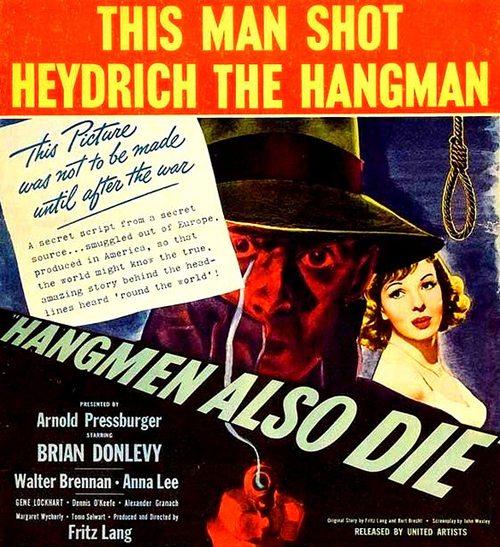
DB here:
The mobster Joseph Rico is in protective custody; tomorrow he testifies against the big boss. But Rico fears reprisals, so he decides to escape. While a sleepy cop guards him in the washroom, he bends over the sink and rinses his face.
Turning so suddenly that water spatters on the mirror, he grabs the cop in an armlock and slams his head against the sink, just below the frameline.
Rico turns to the window to make his escape.
What interests me in this passage from The Enforcer (1951) is not just what happens in the mirror but also what happens on it. While Rico belabors the cop's head, we're given a chance to notice the splash of water that hit the mirror when Rico whirled to the attack. While the action is moving forward, we're reminded of what had triggered it.
We get a sort of parallel reminder in the next scene, when we see the wounded cop again. He's sporting a big bruise on his left temple, a souvenir of Rico's assault.
Pfui. Details, you might say. Or you might (correctly) instance this as another case of Charles Barr's enlightening notion of gradation of emphasis. But it's worth getting a little more specific, because even this simple scene (by non-auteur director Bretaigne Windust) offers us something to think about, and something for today's filmmakers to try.
Most films today don't fully exploit the visual dimension of cinema. True, we have dazzling CGI and fancy camera moves. But when it comes to less flamboyant scenes, directors have limited their options by relying too much on stand-and-deliver and walk-and-talk. There are other aspects of visual storytelling that today's filmmakers neglect. One aspect is the possibility of gracefully moving actors around the set in a sustained fixed shot. A specific tactic I've mentioned before is the Cross, and another involves ways to get people into a room. The option I'm going to sermonize about today is what I'll call scenic density.
By scenic density I mean an approach to staging, shooting, and cutting in which selected details or areas change their status in the course of the action. I don't count the bustle of background business, all that street traffic that is so much pictorial excelsior in our movies. Nor do I refer to stuffing the setting with desk and kitchen flotsam, allusive pop-culture posters, and the other distinctive "assets" that will be exploited when the film's world gets transposed to a videogame. I mean something more expressive and intriguing.
Using it up
Go back to the Enforcer scene. The shot's composition creates a delimited zone of action. The guard cop is framed tightly in the mirror. When the fight breaks out, it's initially framed in that mirror–a narrowing of visual importance. Moreover, the shot is designed to highlight the spatter on the mirror. It's fairly prominent, stuck near the center and, providentially, in the spot that the cop's head initially occupied. The lighting picks out the drips, and in a shot where the figures move in and out of frame, there isn't an equally constant center of interest. We're probably concentrating on Rico's punishing of the cop, but the dribbles of water remain prominent enough to claim our interest, especially when Rico passes out of frame.
So here's my first condition for scenic density: the shot keeps several items of dramatic significance salient in the composition.
This technical choice asks the filmmaker to think of the frame as a field of dynamic masses and forces. Such an idea was part of the aesthetic of "advanced" European and Japanese silent cinema of the 1920s. Many directors explored this dynamism, often aided by low angles and wide-angle lenses. Here are examples from Eisenstein's Old and New and Murnau's Tartuffe.
This pictorial density became especially prominent in American cinema during the 1940s, when low angles, wide-angle lenses, and locations and smaller sets encouraged cinematographers to pack their compositions snugly, as in this shot from Panic in the Streets.
Boris Kaufman, cinematographer for Jean Vigo and Elia Kazan, summed up the principle:
The space within the frame should be entirely used in the composition.
Since cinema is a time-bound art, however, the salient elements in the shot could and should change. But if the frame space is wholly "used," what room is there for change? The only options are to have the using-up elements shift position, or to reveal that the frame isn't used up.
Vivid instances, also from the 1940s, can be seen in Anthony Mann's work, both with and without John Alton. Generally, Mann used the new fashion for depth composition, especially big foreground elements, to heighten scenes of violence. Physical action becomes more aggressive if people rush the camera and halt in tight close-up, especially because wide-angle lenses tend to accelerate movement to the foreground. Mann thrusts violence abruptly to the camera with an almost comic-book effect, as when the club owner is shot in Railroaded, or a man is flung to the floor in Raw Deal.
Even when this in-your-face tactic isn't employed, the Mann films find ingenious ways to develop what seem to be completely locked depth compositions. In Border Incident, Ulrich confronts the Mexican government agent Pablo, disguised as a Bracero. A looming depth shot is followed by a reverse shot displaying a compact composition.
Is the frame space fully used? The second shot above is opened up when Ulrich leans forward to sock Pablo, creating a vacant spot on the far right for Pablo to fall into. The shot is emptied and re-filled, dense once more.
Memories, memories
Aha, you may be saying. Density just refers to squinchy, fussy shots from an era that favored cheap flash. No. The Enforcer shot isn't all that cramped. Of course the blank, unchanging walls serve to highlight the mirror-reflected fight and the water dribbling down the glass, but you can imagine how much more jammed and skewed Mann's treatment of Rico's escape would be. As for the flashier depth, I just needed some clear-cut cases of density, examples in which details and spatial zones become starkly salient. Now I want to suggest that scenic density can be achieved in something more spacious, even monumental. That has to do with time and memory.
Part of what gives the Enforcer shot its interest is the superimposition of two moments of action in a single space: Rico's diversionary turn from the washstand, recorded in the splash he made on the mirror, and the struggle taking place a few seconds later. A further trace of that struggle and that splash is visible in the bruise on the cop's head in the next scene.
That dripping spatter can stand in for the second quality of spatial density I want to highlight: Its capacity to coax us to recall earlier action in the locale. Characters leave their marks and spoors in the space, and those get activated as memories. Unlike the slick surfaces of today's settings, in classic films the settings can bear the impress of human transit, leading us to recall bits of behavior and emotional states. Let me illustrate from Lang's Hangmen Also Die (1943).
It's Nazi-occupied Czechoslovakia, and Gestapo Inspector Ritter is questioning Mrs. Dvorak, the vegetable seller who could identify the woman who misled the officers pursuing an assassin. Torture, or at least what we think of as torture, hasn't started. She is simply standing in front of his desk as he brandishes his riding crop in the manner of a good movie Nazi.
When Mrs. Dvorak denies knowing the woman, Ritter taps the back-rest of the chair. It simply falls off, and we realize it's not fastened to the chair.
Ritter says, "Pick it up again." Now we realize that intimidation has been applied for some while; Ritter has made the woman stoop to replace the back-rest many times. She does so again as the camera tracks back. This is nicely detailed too. She starts to pick it up by bending over, finds the effort too painful, and then goes to her knees to pick it up–just as Ritter taps his riding crop against her hand, a teacher gently chiding a slow pupil.
As Mrs. Dvorak rises to put the piece back in place, the camera pans slightly right to pick up the woman bringing in a tray. Happily Ritter sniffs the coffee jug and resumes questioning the old woman.
Cut to a shot of her by the chair. "Let's start from the beginning," says Ritter, offscreen. Unthinkingly Mrs Dvorak starts to rest her hand on the loose slat, forgetting that the top slat is unattached. It's a natural response. She's been standing there for a long time and would like something to rest on, and the chair is temptingly close. (Presumably, that's its purpose, to taunt the unwary prisoner forced to stand a long time.) Remembering just in time, she yanks her hand away. If she knocks the back-rest off, she'll just have to pick it up again.
Cut to Ritter. "Don't be nervous, Mrs. Dvorak. I'm prepared to—"
Cut to Mrs. Dvorak. As he continues, "–devote to you all of tonight," she forgets herself again and relaxes her hand, this time on the back-rest. It falls off, making her start.
She looks up as Ritter says, offscreen: "Even longer if necessary." Cut to Ritter, gesturing with a piece of sausage and saying, coaxingly, "Well?"
Slowly she goes to her knees again as the camera tracks in on her.
Back to Ritter: "That's the girl." Back to her, rising in pain to replace the back-rest.
The scene concludes with Ritter reminding Mrs. Dvorak that she's in Gestapo headquarters. She acknowledges that she doesn't expect to leave without giving information. He starts his questioning all over again as the scene fades out.
This quietly suspenseful scene establishes a bit of furniture as a key prop. Once the faulty back-rest is marked for our notice, we're expected to remember that it's a means of intimidation–something that Mrs. Dvorak, in her anxiety about refusing to aid the Nazis, twice forgets. Lang's shots, simple and uncrowded, makes the chair, like the spattered mirror in The Enforcer, preserve the trace of human activity. Yet it's more acutely integrated into the scene's drama than the mirror, and remembering how it was used earlier makes us wait tensely to see how it will be used again.
Long-term density
Several scenes later, the Nazis threaten to kill four hundred Czech hostages if the assassin isn't turned over to them. Mascha Novotny has set out for Gestapo headquarters to denounce the man she helped, but she changes her mind and decides not to betray her country. She will only plead for her father's life. Once more we're in Ritter's office.
Centered in the frame, standing out as a pale oblong against the grayer background, the fateful chair is made salient during Mascha's conversation with Gruber. I suspect there's a sort of spatial suspense here–will she move to the chair and dislodge the precarious piece of wood?–but more important, I think, is the fact that the chair ineluctably reminds us of Mrs. Dvorak and her quiet resistance to pressure.
Ritter leaves to consult his superiors. When he comes back, a new composition keeps the chair prominent and lends a new centrality to the clock on Ritter's desk, surmounted by a snarling cat or something like it. (It's visible in shadow in the earlier scene with Mrs. Dvorak.) But now the camera arcs to minimize the Dvorak chair and show the beast and Ritter targeting Mascha.
Soon enough, as if to make sure we remember, Mrs. Dvorak is brought back in, having undergone serious torture. The camera positions reactivate our memories of the earlier scene.
As she continues to lie to protect Mascha, Mrs. Dvorak never touches the chair. Although she has been tortured, she seems wearily defiant, as if her refusal to aid the Nazis has given her some strength: no need to lean on the chair now. As a final cue to our memories, Lang has Ritter play once more with his riding crop, letting its shadow fall on her heart.
The threat is clear: For lying, the old woman will pay with her life.
The chair reappears in a later scene, but I'd argue that then it serves more as a pointer to another prop. The resistance movement fights back by framing Czaka, a beer baron sympathetic to the Nazis, as the assassin. Lang could have explicitly recalled the questioning of Mrs. Dvorak by having Czaka lean on the slat and knock it off. Instead, the composition makes Ritter's clock more important than it was in earlier shots. As Czaka tries to defend himself, the framing blocks our view of the chair but emphasizes the snarling catlike creature on top of the clock. And the chair has shifted a little off and become a bit darker; it's no longer as salient.
This cluster of scenes from Hangmen Also Die illustrates how scenic density can add layers to a film. One scene recalls another not only by similarity of situation and locale but by tangible marks left on it by earlier action. Having seen Mrs. Dvorak subjected to Ritter's oily intimidation, we generally expect something like it to be applied to Anna. This conventional situation is given a rich, concrete presentation by the repeated camera positions and the simple chair that, unmoving, enters into the drama.
Of course as a Hollywood director, Lang was pressured to reuse sets and camera setups. That saved money and time. But he turned such repetitions to his advantage by letting certain objects come forward at crucial moments. They not only become part of the drama but prime us to remember them, and what they revealed, in ensuing scenes. And even though Lang never pursued the aggressive, packed deep-focus of other directors working in the 1940s, he shows how roomier, less pressurized compositions could still be charged with echoes of earlier bits of behavior.
Is this sort of visual-dramatic economy, calling on precise memories of concrete actions, lost in today's American cinema? I suspect it is.
In studying Hangmen Also Die, I was curious about a perennial problem. Was the byplay with the chair a Lang invention on the set, or was it some version of the script, or in the original story by Lang and Bertolt Brecht?
The film didn't have a secret script, as the poster says, but the sources do remain a bit obscure. A draft of the original story signed by Lang and Brecht, in that order, exists. It indicates only that the greengrocer, called Frau Blaschke, is subjected to eight hours of "the usual Gestapo brutality" and refuses to identify the girl. There were other drafts of the screenplay, but I don't have access to them, if they exist, and standard sources on Brecht in Hollywood don't mention this scene's details.
Somewhere along the line, though, the chair-back business was concocted. I found the shooting script signed only by John Wexley (Brecht claimed that he was robbed of credit) and annotated in pencil, perhaps by Lang. That script indicates that Ritter's room contains "a vacant chair with its seat close against desk." and Mrs. Dvorak is standing beside it as the scene begins. Much of the dialogue is the same , with some slight changes notated in pencil, possibly by Lang. But the camera movements indicated are different from those in the final film, and more importantly so are the actions. After Mrs. Dvorak claims that she doesn't know the woman who helped the assassin, we read the following. I indicate pencil notations with {}.
In her fatigue, she places hand on back-rest of chair. But its dowels are loose and back-rest clatters to the floor.
RITTER (saccharine): Pick it up, Mrs. Dvorak.
CAMERA MOVES IN CLOSE as she obeys, stooping with painful fatigue–she has done this many times tonight.
RITTER: Now put it back in place, Mrs. Dvorak.
(She does so)
As Ritter questions her:
MED. SHOT – MRS. DVORAK. Without thinking, she is about to place hand again on loose back-rest–when she remembers and jerks back.
RITTER'S VOICE: Now don't be nervous, Mrs. Dvorak…I'm prepared to devote to you all of tonight–and even longer, if necessary.
Mrs. Dvorak, unconsciously reacting to this, once more rests hand on chair. {She jerks back but} The piece of wood clatters to the floor.
MED. SHOT – RITTER. Ritter waits patiently; when she doesn't move, inquires:
RITTER: Well…?
CAMERA PULLS BACK to INCLUDE Mrs. Dvorak, who stoops to repeat painful routine. Ritter smiles approvingly.
RITTER: That's the girl.
Nothing here is indicated about Ritter's riding crop, nor does he initially knock the back-rest off the chair. Mrs. Dvorak does it herself, accidentally. And the scripted line is "Pick it up, Mrs. Dvorak," not, as in the finished film, "Pick it up again, Mrs. Dvorak." The film version makes it clear that the byplay with the backrest is part of Ritter's softening-up technique, something indicated in the script but not spelled out.
The later scenes in the film show other differences, mostly additions of things not mentioned in the shooting script. For instance, the script doesn't mention the shadow of Ritter's riding-crop. But the excerpt shows that the shooting script points toward some of the detailing we find in the finished film. It provides the sort of nudges that a director, especially one as oriented to gesture as Lang was, could elaborate on the set.
The Lang/ Brecht story has been published as "437!! Ein Seiselfilm," in The Brecht Yearbook vol. 28: Friends, Colleagues, Collaborators, ed. Stephen Brockmann (2003), 9-30. The passage I mention, kindly translated for me by Ben Brewster, is on p. 16. Broader background on Brecht's adventures in Hollywood can be found in James K. Lyon, Bertolt Brecht in America (Princeton University Press, 1980). Chapter 14 of Patrick McGilligan's Fritz Lang: The Nature of the Beast (St. Martin's, 1997) offers an account, mostly relying on Brecht's viewpoint, of the making of Hangmen Also Die. The shooting script is in the John Wexley collection of the Wisconsin Center for Film and Theater Research and the State Historical Society here in Madison. Thanks also to Marc Silberman, renowned Brecht expert, for advice.
You are my density | David Bordwell

